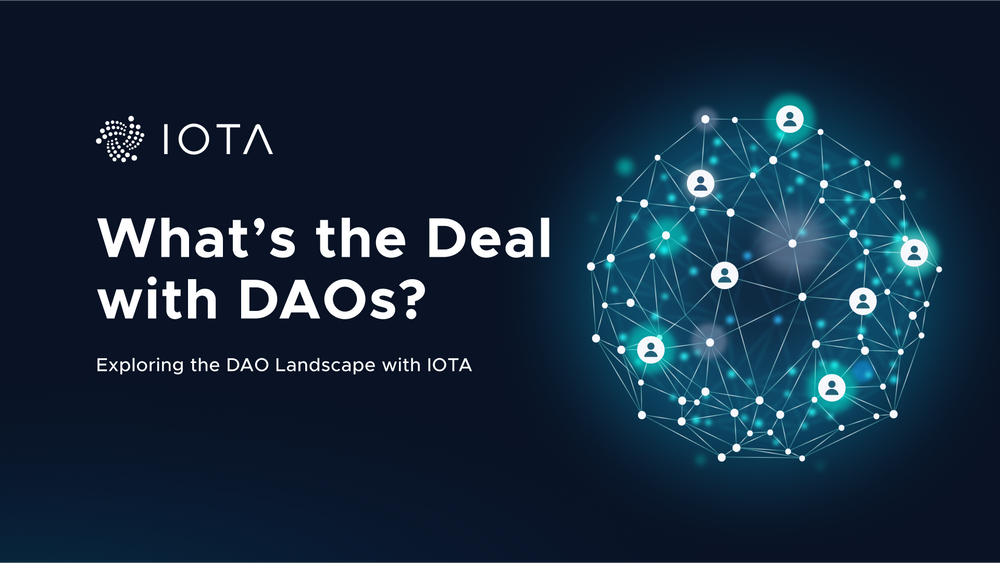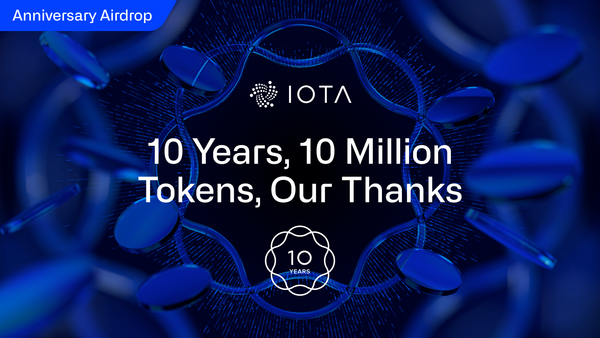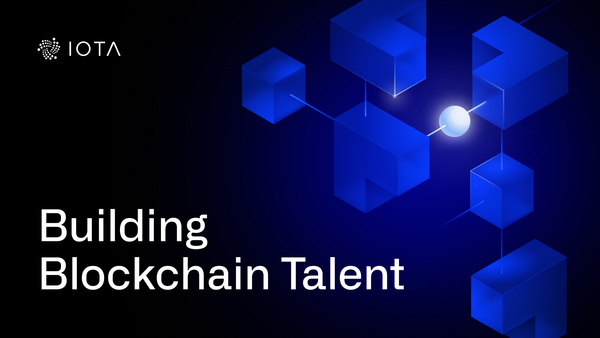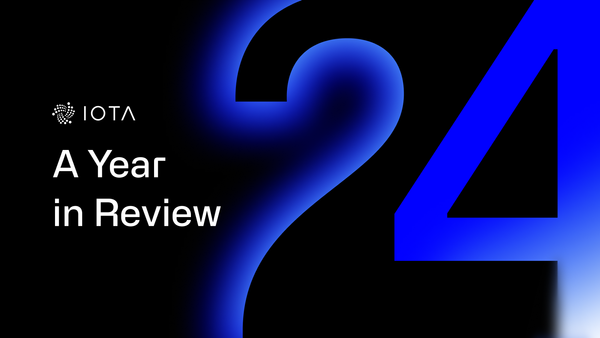What’s the Deal with DAOs?
Part 1: Exploring the DAO Landscape with IOTA
TL;DR:
IOTA is entering the DAO space. The IOTA community treasury vote is the first official IOTA DAO measure, but it’s by no means the only development. The IOTA DAO Pioneers is a collective formed to explore DAO opportunities, while several new DAOs are using IOTA’s open-source software. In Part 1 of a two-part series, we look at DAOs and ask what purposes they serve and how they run themselves? In Part 2, published next Wednesday at 15:00 CEST, we look at how DAOs are using IOTA tech and the IOTA community.
Decentralized autonomous organizations (DAOs) are making headlines. Back in November 2021, a collective known as ConstitutionDAO raised $47 million worth of Ether in an (ultimately unsuccessful) bid to purchase an original copy of the US Constitution at a Sotheby’s auction. In February this year, shortly after the Russian invasion of Ukraine, Pussy Riot co-founder Nadya Tolokonnikova helped launch Ukraine DAO which has reportedly raised almost $7 million. Around the same time, a collective helped pay the legal bills of WikiLeaks founder Julian Assange by raising over $50 million in Ether through selling an NFT of a clock.
Away from the headlines, there are some facts and figures to grasp about DAOs. As of January 2022, the total market capitalization of all DAO tokens stood at around $21 billion. In the same period, the total number of DAOs in the ecosystem stood at 4,227 (according to branding agency Social.com).
As we’ll see in part II of this blog post, the IOTA Foundation is supporting the IOTA community to move into the DAO space. The ongoing community vote on unclaimed IOTA tokens is touted as the first DAO event in IOTA’s history, while its ongoing IOTA DAO Pioneers program is an ecosystem-wide exploration of the web3 and DAO space that has already resulted in several being developed into DAOs and funded by the Foundation, with many more projects currently growing out of the pool of interested learners.
But what is a DAO?
A DAO is an open organization of individuals who may or may not know themselves “in real life” but come together virtually – inspired by an idea first floated online, on Twitter or Discord, perhaps – to raise capital and achieve their goal(s) by using web3, decentralized ledger technology (DLT), a growing number of tools, and a voting mechanism, backed up by a treasury or bank and some form of governance or share system.
It’s all in the name. DAOs are, to one degree or another:
- Decentralized: In what has been described as a natural progression in the evolution of the corporate structure (“Corporate firms have been decentralizing for decades. DAOs are the next evolution” Bankless, March 16), a DAO has no, or very little, centralized point of control, but gives everyone, wherever they’re located, a stake in the project. Most likely it does not have one person as a leader at the top of the hierarchy controlling outcomes and decisions, but several people who help coordinate individuals across the DAO that are responsible for a specific activity. Individuals can join a DAO and contribute their expertise as they see fit, and leave when they want: a whole other level of more meaningful stakeholder engagement in a network. The degree of decentralization differs from case to case, with some incentivizing tools like Tips, Bounties, Streams and KPI Options needing a degree of centralization (see this Aragon blog post for more incentivizing tools).
- Autonomous: Like an autonomous republic, a DAO is theoretically free to govern itself and control its own affairs: by not being domiciled in one place, a DAO transcends any one regulatory jurisdiction or legal structure.
- Organization: It’s important to remember that a DAO remains an organization. There are hierarchies, just not rigid ones. There is leadership, just not concentrated on one person. And there is a shared purpose, around which the DAO is formed. In DAO, decentralized governance is just as important as decentralized finance. DAOs can be large or small: no one size fits all, and the size of the DAO depends on what it’s meant to accomplish. Dunbar's number suggests 150 as an upper limit for the number of people that can maintain stable social relationships with each other and know how everyone in the network relates to each other.
None of these three elements are written in stone, and the level of autonomy or decentralization differs from DAO to DAO.
The purpose of DAOs
From Service DAOs to Investment DAOs, DAO alliances to DAOs-of-DAOs: no one DAO is quite like another (see here for Coopahtroopa’s overview of DAO types). However, they all have in common key important selling points. Some practical, some more visionary. These include:
- Transparency: Web3 and DLT allow us to observe the decision-making process of groups of people like never before. Given the immutability of the smart contract technology used to execute actions, DAOs could spell the end of taking decisions behind closed doors. All discussions and decisions are made public, in forums or Discord servers where everyone is equally entitled to speak up, form an opinion and try to influence the direction of the project with arguments. In this way, DAOs herald a more open approach to making decisions and working together.
- Flexibility and compostability: DAOs can quickly form themselves to achieve long or short-term goals, large or small-scale projects, and disappear once the goal(s) is achieved. Reduced overhead costs and operational expenses are an immediate benefit, as is a closer involvement of all members with voting and decision making.
Transparent DAOs enable us to analyze how a consensus was reached and understand what facts were available at the time of a vote; and, if the result of the vote is found to have been based on poor data, it offers the opportunity to course-correct with a new, easily-implemented vote. In this sense, DAOs are more nimble and provide more effective governance than traditional organizations. Check out “build-your-own” DAO platforms like DAOHaus, which is owned and operated by its community and enables people to create and manage their own DAO.
- Incentivization: Several tools on the market offer incentivization for participation. For example, platforms like Coordinape give each DAO member the ability to reward and directly distribute incentives to other participants based on how the member perceives the value of other participants’ contributions.
- Collaboration and an end to coordination failure?: When groups fail to coordinate their decision making, they fail to achieve optimal results (see the “prisoner's dilemma”): whether failing to roll out a coherent approach to the coronavirus pandemic or still not putting an end to the stockpiling of nuclear weapons, we see examples of coordination failure everywhere around us. Although this report finds “several recurring challenges” in DAO coordination, DAO believers foresee a solution to coordination failure. “The final form of a stateful internet could allow us to coordinate the actions of multiple economic actors and therefore could solve coordination failures,” writes Kevin Owocki in Know Thy Enemy: Coordination Failures.
DAO governance: Smart contracts and funding
Most DAOs operate according to smart contracts, which are pieces of code written onto the distributed ledger and which are automatically executed when triggered.
Not all DAOs rely on the automated execution of decisions via smart contracts. In several cases, elements of trusted entities are often involved, be it the developers that manually execute the new code, or a form of safeguard mechanism that stops faulty or malicious code from being executed. This proves that all kinds and degrees of decentralization are possible, depending very much on the individual use case and philosophy of the DAO.
Once the DAO has a goal and a set of rules embedded into the smart contracts, the next challenge is to raise funds. This is often achieved by issuing tokens or NFTs through public or private offerings, with the raised funds kept in the DAO’s treasury. These tokens are also tools of governance: they’re used to vote on decisions taken by the DAO, an important aspect of voting in any DAO, where participants don’t share their personal identities online.
DAO governance: Voting
If DAO participants don’t share their personal identities online, how do they make their vote count?
The more tokens you assign to a vote, the stronger your preference. In conviction voting, rather than depend on a single, one-off vote, community members continuously express their preferences for which proposals they would like the DAO to approve. Preferences can be changed at any time, but the longer they hold their preference for a proposal, the stronger the conviction grows. This stronger conviction gives longstanding and consistently-held preferences more influence over new arrivals trying to influence a vote, and in this way should prevent Sybil attacks and other assaults.
The IOTA Community Treasury Vote is more of a locked vote that draws on dedication rather than conviction, as in a continuous conviction vote. The Treasury Vote has clear start and end points but voters are free to decide how many tokens and time they dedicate to their decision. Voters, therefore, balance the opportunity costs of doing something else with that tokens (such as trading or buying NFTs) or participating in governance.
Token-based voting involves both financial and decision-making elements: you can buy votes (literally), but the benefit is that coin voting can’t be “gamed” – you either have the funds or you don’t. For the case against coin voting, see Vitalik Buterin’s Moving Beyond Coin Voting Governance.
DAOs are also beginning to place greater emphasis on rewarding contribution and participation, rather than relying on token-based governance. Governance designs are changing to align members that participate and bring value with the distribution of wealth.
Not everyone is convinced by DAO voting. “DAOs as the future? Hard pass, thanks” reads a recent headline on TechCrunch, which argues that organizations often depend on trust-based decisions that might not make sense for the financial bottom line and are therefore unlikely to be taken by a smart contract algorithm. Another popular objection to DAO governance is that, while it may support decision-making on the macro level, not everyone on the micro level is going to want or be able to vote on every last decision that comes down the pipeline. Some decisions might be seen as too trivial, some too complex.
This is where delegation comes in.
Delegation and liquid democracy
In DAOs that use delegation, members can turn over their voting rights to experts with domain-specific knowledge. Individuals with a proven track record of expertise are better qualified to make certain decisions than laymen, and so can be trusted with your voting power. And the bestowed voting power isn’t held in perpetuity by the delegates, but can be revoked at any time or given to any other expert depending on the topic: this is liquid democracy in action, as IOTA Foundation Co-Founder Dominik Schiener has written.
Delegation rests on trust, and so, ultimately, does the success or failure of a DAO. In his classic Reinventing Organizations: A Guide to Creating Organizations Inspired by the Next Stage of Human Consciousness, Frederic Laloux writes: “When organizations are built not on implicit mechanisms of fear but on structures and practices that breed trust and responsibility, extraordinary and unexpected things start to happen.”
In the next blog post, we'll explore how the IOTA Foundation is supporting DAOs built on IOTA, and running through some of the key IOTA features that help DAOs grow.




